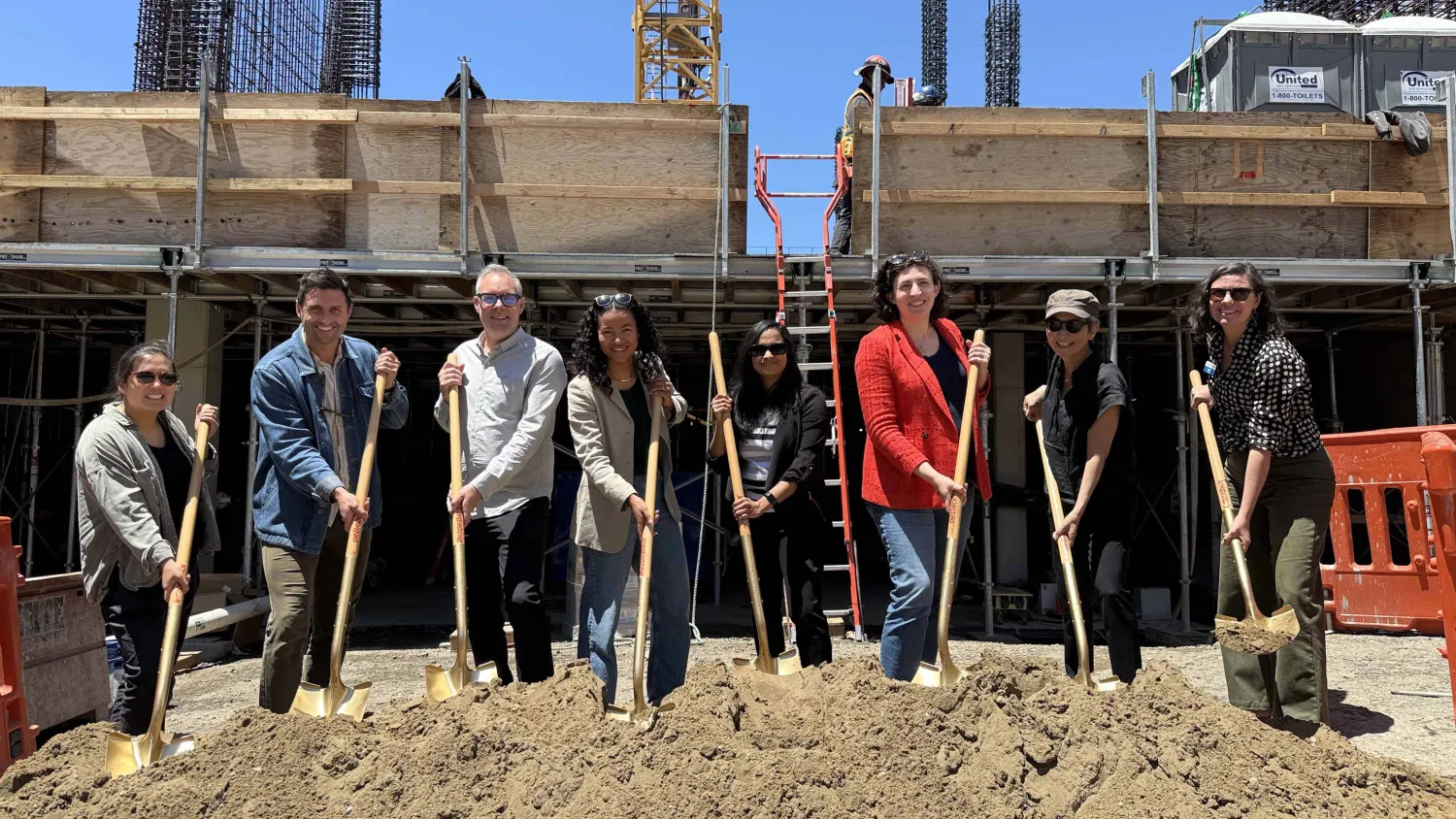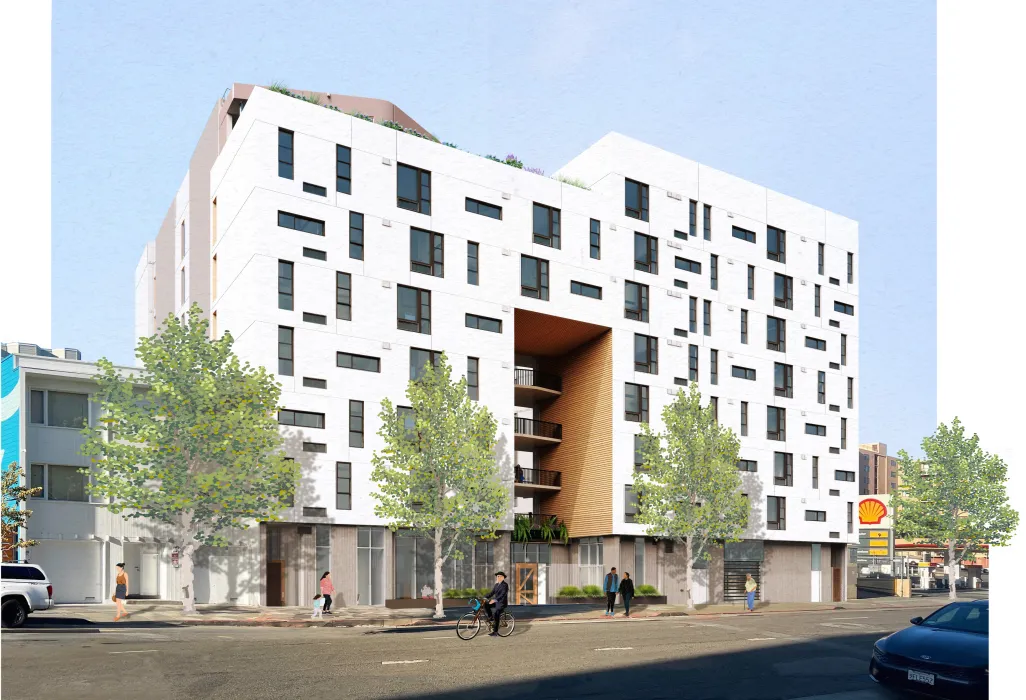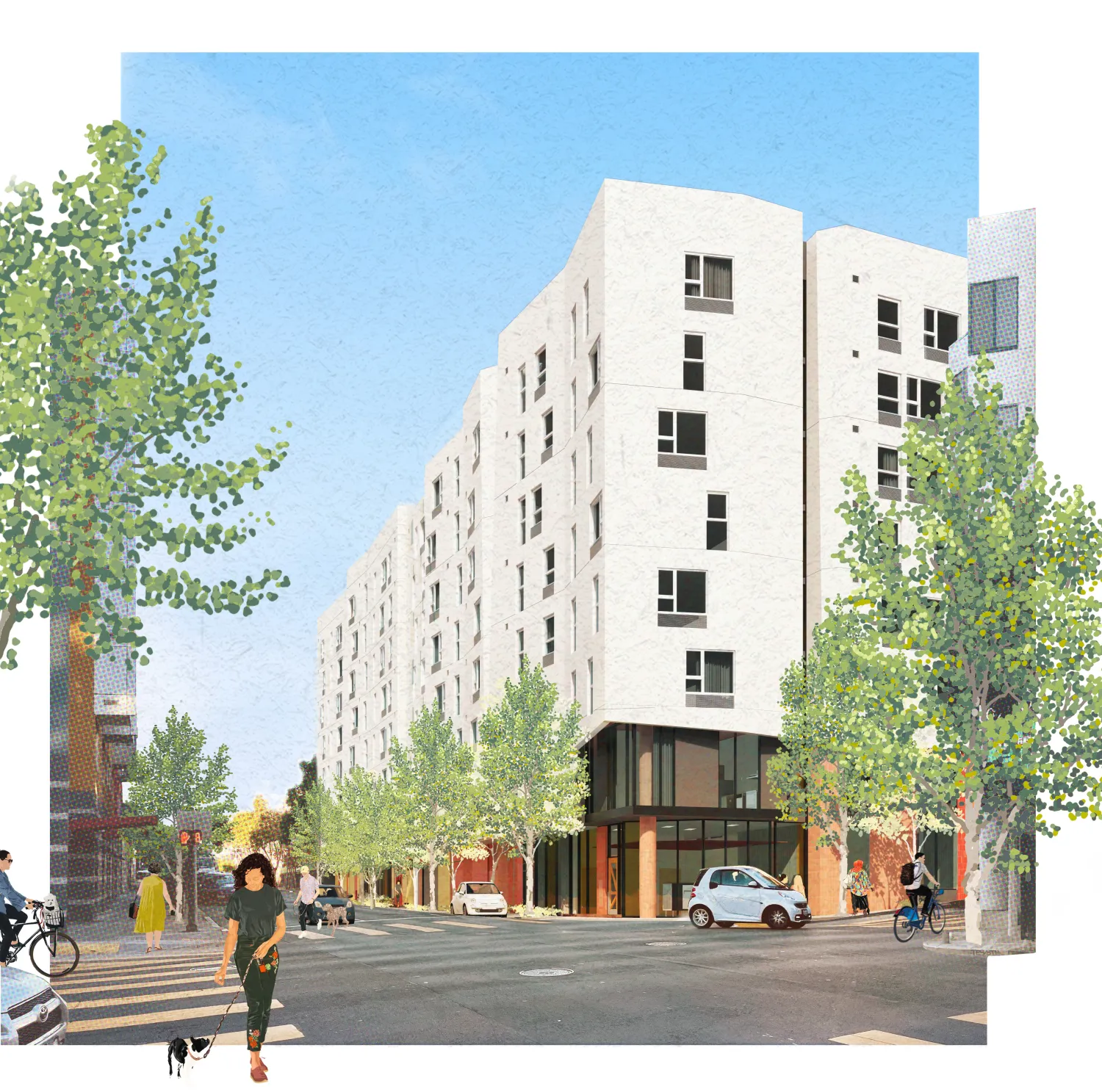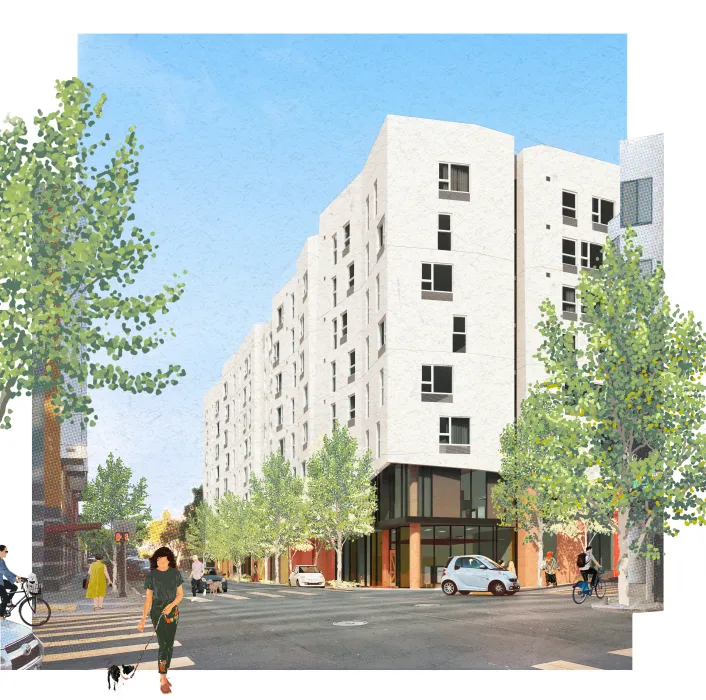
The team celebrating the groundbreakings for 750 Golden Gate and 850 Turk, upcoming affordable homes in San Francisco. Left to right: Kayla Bien, Min Design; Aaron Landrith, DBA; Jerome Christensen, Min Design; Brooke Calhoun, DBA; Ashlesha Mehendale, Min Design; Caroline Souza, DBA; E.B. Min, Min Design; Lauren Fuhry, MidPen Housing Corporation.
We’re excited to share that construction is now underway on two new David Baker Architects-designed affordable housing communities in San Francisco: 850 Turk and 750 Golden Gate (in collaboration with Min Design). Both were developed by MidPen Housing and are being built by Cahill Contractors. Together, these new communities will bring 167 affordable homes to the heart of the city, built above structured parking on sites previously used as surface lots for State employees.
They’re both beautiful, efficient all-electric buildings. But the real headline here isn’t the architecture—it’s the speed.
750 Golden Gate progressed from early design to construction in just over a year—a timeline nearly unheard of for an affordable housing project in San Francisco. And that swiftness wasn’t a fluke. It was the result of specific policy choices that made the process faster, cheaper, and more collaborative.
Building faster isn’t a fantasy—it’s a policy choice
These projects skipped discretionary planning review, and it made all the difference.
Both 750 Golden Gate and 850 Turk are part of the California’s State Surplus Lands program, created by Executive Order N-06-19, which directed State agencies to identify underutilized land and make it available for affordable housing. Both of these San Francisco parcels were serving as active State employee parking lots. Now, they’re both being transformed into 100% affordable eight-story buildings, thanks to a framework that prioritizes housing.
Because these projects were on Sate land, they did not go through San Francisco’s local discretionary planning review process—one of the biggest sources of delay and uncertainty in the City’s entitlement system. Instead, the projects were approved ministerially, saving both years and millions of dollars.
We’re proud of how we navigated an unusually fast permitting process—but speed comes with tradeoffs. For example, at 750 Golden Gate, to avoid drawn-out negotiations with PG&E and the San Francisco Department of Public Works (DPW) over in-grade transformers, we squeezed two transformer rooms into already-tight ground-floor plans. That preserved the timeline, but reduced space for active uses and constrained the pedestrian experience. In a different context, we might have fought harder for a better outcome, but in this case we prioritized getting the project built and making the homes available more quickly. Regulatory hurdles force design and development teams to make constant tradeoffs, and those choices shape cost, quality, and design.
To be clear, San Francisco is working hard to fix this. The Breed and Lurie administrations have made important efforts to streamline permitting and align the Planning and Building Departments. And recent State legislation—including various California Density Bonus and streamlined approval laws—has been crucial in pushing cities toward more efficient, pro-housing processes.
But as these two projects show, when we remove unnecessary layers of review and allow experienced teams to move forward, we can build the housing and infrastructure we need.
Speed also comes from trust
We had the rare opportunity to work with the same client—MidPen Housing—and the same builder—Cahill Contractors—on both projects at the same time. We also were able to designate overlapping architectural teams at DBA. Each building had its own project manager, but the teams shared lessons, coordinated decisions, and kept things moving. Shared pricing and technical knowledge meant we could make faster, smarter choices.
We reused systems and details across both projects, reducing design time and limiting confusion in the field. This kind of efficient repetition is exactly what helps affordable housing pencil out. And yet, current procurement policies often make it hard to keep strong teams together across projects.
What’s stopping us from doing this more often?
There’s a growing conversation on the left about whether our own systems are standing in the way of the outcomes we claim to want. At DBA, we’ve long believed in smart regulation—but we’ve also seen how layers of well-intentioned rules, reviews, and procedural complexity can make it harder, slower, and more expensive to build the housing people need.
We’ve seen modular construction blocked for political reasons, procurement frameworks that disqualify experienced teams, and requirements that delay occupancy over minor discrepancies—rippling into tax credit losses and months of vacancy.
750 Golden Gate and 850 Turk show what’s possible when policy clears a path and when experienced teams are allowed to do what they do best. These aren’t just buildings: They’re a case study in how to build more housing, faster—and why we need to make that the norm.



